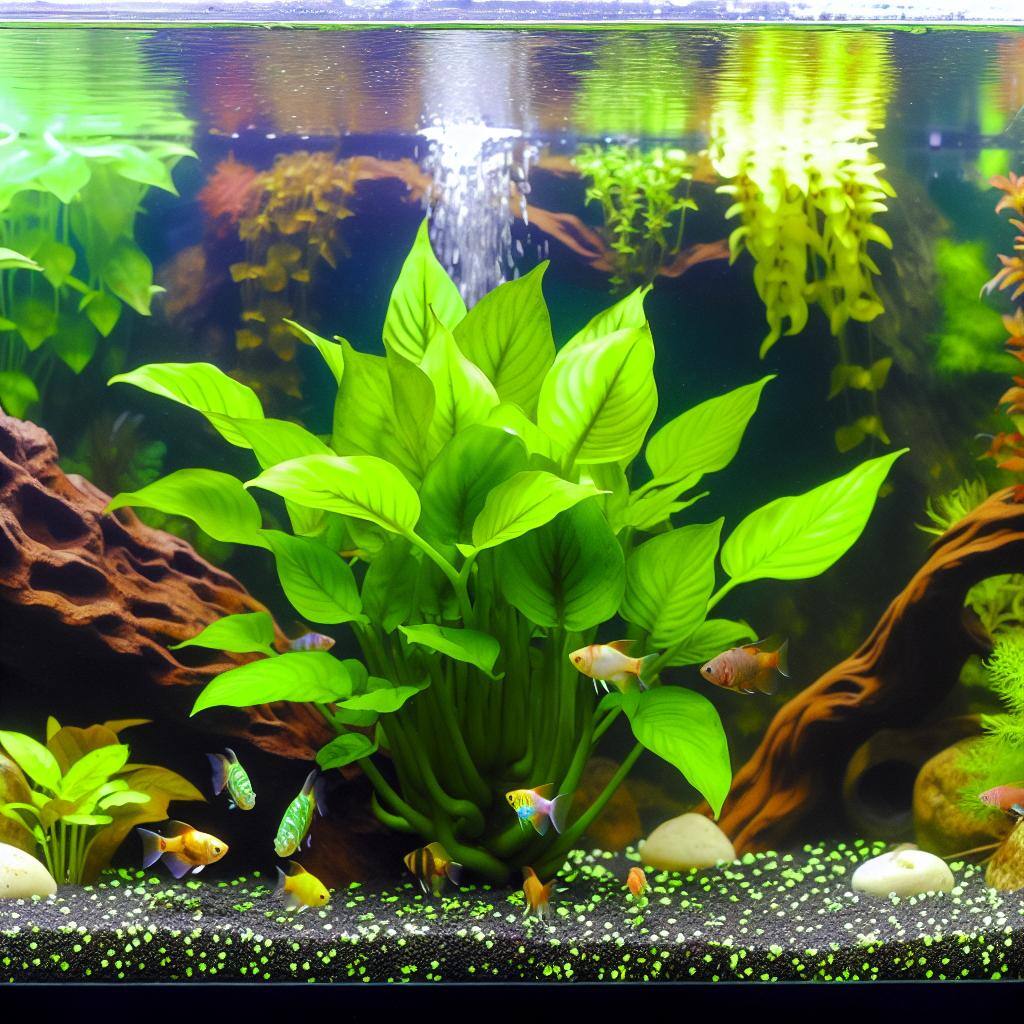
Unlock the secrets to thriving Anubias plants in your aquarium with our comprehensive care guide.
Understanding Anubias Plant Requirements
Anubias plants are a popular choice among aquarium enthusiasts due to their hardiness and low maintenance needs. These tropical perennials, native to West Africa, thrive in a variety of water conditions and are well-suited for both novice and experienced aquarists. Understanding the specific needs of Anubias plants, including their preference for stable water parameters, moderate lighting, and nutrient-rich substrate, is essential for ensuring their health and growth.
Moreover, Anubias plants are adaptable to both submerged and emergent environments, making them versatile additions to any aquarium setup. Their slow growth rate and tolerance for a range of pH values contribute to their reputation as an ideal plant for community tanks. Careful attention to their requirements can prevent common issues and promote lush, vibrant foliage.
Optimal Lighting and Water Conditions for Anubias
To maintain the vitality of Anubias plants, optimal lighting and water conditions must be provided. Anubias plants prefer low to moderate lighting to prevent algae growth on their leaves. A lighting period of 8 to 10 hours per day is sufficient. They can be kept in both shaded areas and well-lit spots, but direct sunlight should be avoided to minimize the risk of algae proliferation.
As for water conditions, Anubias plants are not overly demanding. They thrive in a temperature range of 72°F to 82°F (22°C to 28°C) and can tolerate a pH range of 6.0 to 7.5. Soft to moderately hard water is ideal, and regular water changes are recommended to remove excess nutrients and prevent algae issues. Keeping these factors in check will ensure your Anubias plants remain healthy and robust.
Feeding and Fertilization Strategies
Feeding and fertilization are crucial for the sustained health of Anubias plants. While they are not heavy feeders, they do benefit from additional nutrients, especially if the natural supply in the aquarium is low. A balanced aquarium fertilizer can be added to the water column or substrate to provide the necessary macro and micronutrients.
It's important to follow the recommended dosage of fertilizers to avoid over-fertilization, which can lead to algae growth and negatively impact water quality. Root tabs placed near the root system can be particularly effective for Anubias, as they absorb nutrients primarily through their roots. Regular monitoring of nutrient levels will help in adjusting feeding and fertilization protocols for optimal plant health.
Propagating Anubias Plants Successfully
Propagating Anubias plants is a simple and rewarding process. The most common method is by dividing the rhizome, which is the horizontal stem from which leaves and roots grow. Using a sharp and sterilized knife or scissors, cut the rhizome into sections, ensuring each section has at least a couple of leaves and a portion of the roots.
The new sections can then be attached to rocks, driftwood, or planted in the substrate, taking care not to bury the rhizome too deep to prevent rot. In optimal conditions, the new plants will soon establish themselves and continue to grow. With patience and proper care, hobbyists can easily expand their collection of Anubias plants through propagation.
Dealing with Common Anubias Plant Problems
Anubias plants are generally robust, but they can encounter several common problems, such as yellowing leaves, slow growth, and algae growth on their leaves. Yellowing leaves may indicate a nutrient deficiency, which can be remedied by adjusting fertilization practices. Slow growth is typical for Anubias but can be exacerbated by inadequate lighting or poor water quality.
Algae growth on leaves is a common issue that occurs when there is excess light or nutrients in the water. Regular maintenance, including cleaning the leaves, controlling light levels, and ensuring balanced nutrient levels, can help address these problems. If algae become a persistent issue, consider introducing algae-eating fish or invertebrates to the aquarium as a natural control measure.
Live freshwater aquarium plants, such as Anubias, are essential additions to any aquatic environment. These plants not only enhance the aesthetics of your tank but also provide numerous benefits for your fish and overall tank health. With their ability to thrive in various water conditions and their low maintenance requirements, live freshwater aquarium plants like Anubias are perfect for both beginner and experienced aquarists. By understanding their specific needs, such as stable water parameters, moderate lighting, and nutrient-rich substrate, you can ensure the health and growth of these plants in your aquarium. With their adaptability to both submerged and emergent environments, Anubias plants offer versatility and beauty to your underwater world. To maintain their vitality, providing optimal lighting and water conditions is crucial. With proper care and attention to their feeding and fertilization needs, you can enjoy lush, vibrant foliage in your tank. Propagating Anubias plants is a straightforward and rewarding process, allowing you to expand your plant collection with ease. By dealing with common issues like yellowing leaves or algae growth, you can ensure that your live freshwater aquarium plants continue to thrive. For more information and resources on live aquarium plants, consider exploring our guide on Anubias Barteri Nana and other varieties to enhance your aquatic oasis.



Leave a Comment